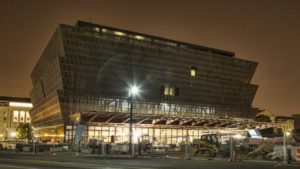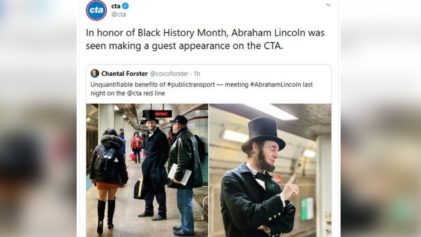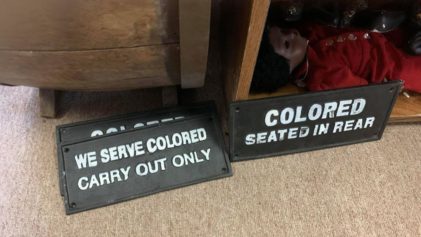
National Museum of African American History and Culture. (Courtesy of the museum)
History matters. And Black history matters. This year will prove to be an important year, as President Obama will dedicate the National Museum of African American History and Culture, the latest addition to the Smithsonian.
Fittingly, the museum is located on the National Mall in the shadow of the Washington Monument, which is dedicated in the name of the nation’s most well-known slave owner. Lonnie Bunch, the founding director of the museum who has been involved with this important effort for over a decade, recently spoke with Susan Page of USA Today.
Bunch noted that the museum will reflect the creativity of the African-American community, with touching, powerful and uplifting artifacts, ranging from Harriet Tubman’s hymnal and Nat Turner’s Bible, to quilts, Chuck Berry’s guitar and George Clinton’s “Mothership” from the funk group Parliament-Funkadelic.
Further, as the New Journal and Guide reported, the institution will also display the glass-covered coffin of Emmett Till, the 14-year old Black boy from Chicago who was murdered in 1955 by the Mississippi Klan. Among the museum’s other features are the Emancipation Proclamation and Thirteenth Amendment signed by Abraham Lincoln; segregation artifacts — including a segregated railroad car; an exhibit dedicated to Black incarceration; and two performance spaces, including a theater named after Oprah Winfrey, who donated $21 million to the museum.
One artifact that resonated with Bunch was a piece of wood once touched by enslaved Africans.
“I am still overwhelmed by the piece of wood that we brought up from a slave ship off the coast of South Africa,” Bunch said. “The tribal chieftain from that community told me that when you go back to where that ship is, if you could take soil from Mozambique, where most of the people came from, and if you could sprinkle that soil over the ship, then for the first time since 1794, our people will sleep in their own land.”
Bunch said they sprinkled the soil over the ship and felt the power of the ancestors.
The museum will be about the old as well as the new, with items from the Black Lives Matter movement and the Million Man March 20th anniversary. Bunch had quite a bit to say about the Black Lives Matter movement and how it fits into the new museum, given the current debate about race in America. He said history is not nostalgia, but rather it is necessary to use the past to understand the present, if places such as this museum are to be valuable.
“History is this amazing tool that helps people live their lives to understand the challenges they face,” Bunch said.
“When we look at things like Black Lives Matter, it’s crucially important for us to interview people involved, to go to Baltimore and interview people around the crisis there,” he said, “to begin to collect artifacts — shirts that say ‘Black Lives Matter’ or the posters that people carried.”
The Black Lives Matter movement, according to Bunch, is not “your grandmother’s civil rights movement,” but rather an example of the use of technology and media to create social change. And yet every generation, he said, has had its own iteration of challenging America to live up to its stated values, as was the case with the abolition movement.
“So in some ways Black Lives Matter is part of a long tradition of saying, ‘We can perfect America if we’re willing to challenge America,’ ” Bunch added.
The museum director believes that the younger generation of millennials looks at race as something more fluid, with boundaries not so rigid as those of his generation. Yet, he said, they know that “race is such an important factor that shapes opportunities and expectations.”
“We want to be the place where people come and say, ‘OK, this just happened. What’s the background to this? What preceded this?’ ” John Franklin, a museum director, told Edna Kane-Williams of the New Journal and Guide.
“Military history, sports history, the history of African-American organizations and institutions – from schools that our ancestors built to colleges and universities that our religious organizations constructed – to the political and social and economic organizations that we’ve created from slavery right up to today” will be represented among the exhibits, Franklin said.
“It’s just been very exciting working on this project and seeing a very diverse team come together with all kinds of skills.”
The five-acre museum is on Constitution Avenue, between the Washington Monument and the National Museum of American History. The three-floor, 400,000-square-foot structure will be the only national museum dedicated solely to Black culture and history.
“In many ways, there are few things as powerful and as important as a people, as a nation that is steeped in its history. Often America is celebrated as a place that forgets,” states the museum website. “This museum seeks to help all Americans remember, and by remembering, this institution will stimulate a dialogue about race and help to foster a spirit of reconciliation and healing.”


